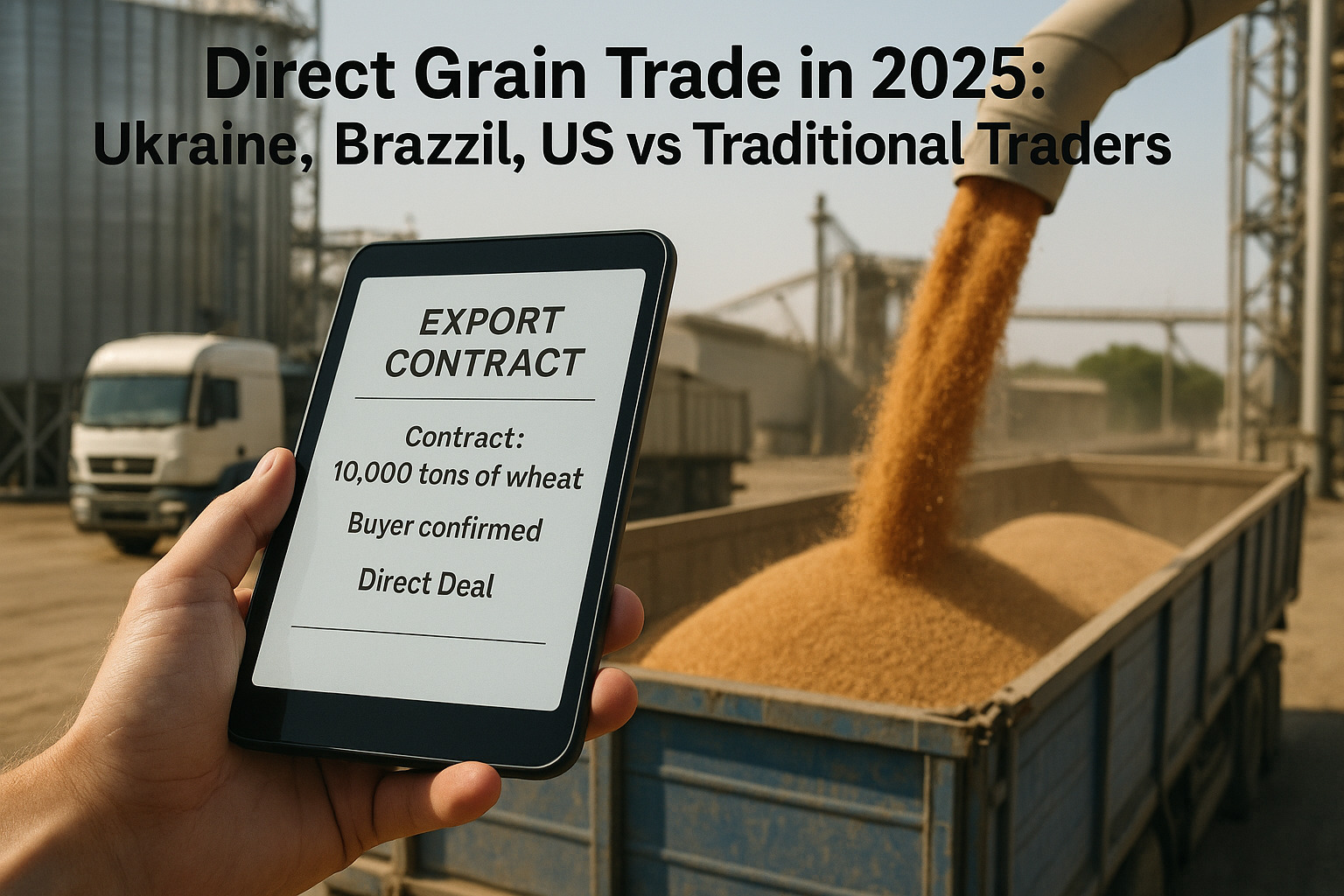Direct Grain Trade in 2025: Ukraine, Brazil, US vs. Traditional Traders

In the 2024/25 marketing year, Ukraine’s grain exports are projected to decline sharply: wheat down 25% to about 13.6 million tonnes and corn down 23% to around 22 million tonnes, due to drought and war-related disruptions.
Russia achieved record exports of roughly 71 million tonnes in 2023/24, supported by a U.S.-brokered agreement to reopen certain Black Sea trade routes.
The United States remains the world’s leading corn supplier and is on track to export record volumes in 2024/25, benefiting from strong demand and favorable harvest timing.
🌐 2. Traditional Traders vs. Direct Trade Models
Traditional Commodity Traders (the “middlemen”)
Work through multiple intermediaries, controlling logistics, financing, and storage.
Often secure supply via long-term contracts, syndicated deals, or speculative stockpiling.
Direct Grain Trade (via platforms like Agrix)
Connects exporters directly with buyers, bypassing intermediaries.
Cuts costs, increases transparency, and ensures full traceability and compliance.
Example: CHS Ukraine exports ~1 million tonnes of grain annually directly to markets such as Egypt, Morocco, Indonesia, Bangladesh, Spain, China, and South Korea.
🚜 3. Country-by-Country Export Comparison
Ukraine
Despite volume declines, remains competitive: harvested 6.2 million tonnes of soybeans in 2024 (~50% exported). Corn output reached ~26 Mt, with ~22 Mt exported in 2024/25.
U.S. tariffs on competitors like China could strengthen Ukraine’s role in global grain trade.
Brazil
Rising domestic corn demand from ethanol mandates and the livestock sector may reduce exports by around 9% in 2025, opening opportunities for U.S. and Ukrainian suppliers.
United States
Expected to deliver record corn exports in 2024/25 thanks to early harvest cycles and robust export agreements.
However, retaliatory tariffs from China and Canada have contributed to price declines: wheat –17%, corn –9%, soybeans –8% in recent months.
📊 4. Why Buyers Are Moving Toward Direct Trade in 2025
Cost efficiency — Eliminating intermediaries reduces costs and improves profit margins for both exporters and importers.
Supply diversification — With Black Sea disruptions and inconsistent Brazilian harvests, buyers are turning to reliable origins such as Ukraine and the U.S.
Transparency & compliance — Especially in the EU and MENA, buyers require traceability, certifications, and clear logistics arrangements from the outset.
Faster delivery — U.S. early harvests allow quick supply, while Brazilian exports face seasonal delays.
🔍 5. Exporter Outlook & Direct Trade Advantages — 2025
Ukraine — Corn exports around 22 Mt, soy ~3 Mt in H1 2025. Offers competitive pricing, high transparency, and alternative logistics via EU land corridors.
Brazil — Domestic demand growth is tightening export availability (~9% reduction forecast). Less volume for direct deals; upward price pressure expected.
United States — Record corn export volume with early-season shipping advantage. Known for reliable volumes and scalable logistics, though exposed to trade war risks.
About Generic H2 (Embedded)
This blog post is published by Generic H2 (Embedded), an active participant on our trading platform. The content reflects company insights, product knowledge, or market trends relevant to their industry. Articles like this one help boost SEO visibility and offer valuable information for future visitors and potential partners.